Last updated on April 3rd, 2024 at 01:55 pm
We all have heard that a capacitor blocks DC and passes AC. But what is the reason behind this behavior of a capacitor?
A capacitor blocks DC in a steady state only. When a capacitor gets charged fully and the voltage across it becomes equal and opposite to the DC input voltage, no more current can flow through it. This is when we say the capacitor is blocking DC.
Whereas in the case of input AC supply, the voltage drops, becomes zero and reverses. This happens multiple times in a second depending upon the frequency of the supply. Due to this, it never reaches a steady state as it keeps charging and discharging in both directions. And thus we say it is passing the AC.
Note: Only capacitor with no polarity passes AC. For example, Tantalum and electrolytic are polarized i.e., cannot be used in reverse polarity. Hence, they can’t pass AC.
For a more detailed and mathematical answer keep reading.
Table of Contents
How does a capacitor work in DC?
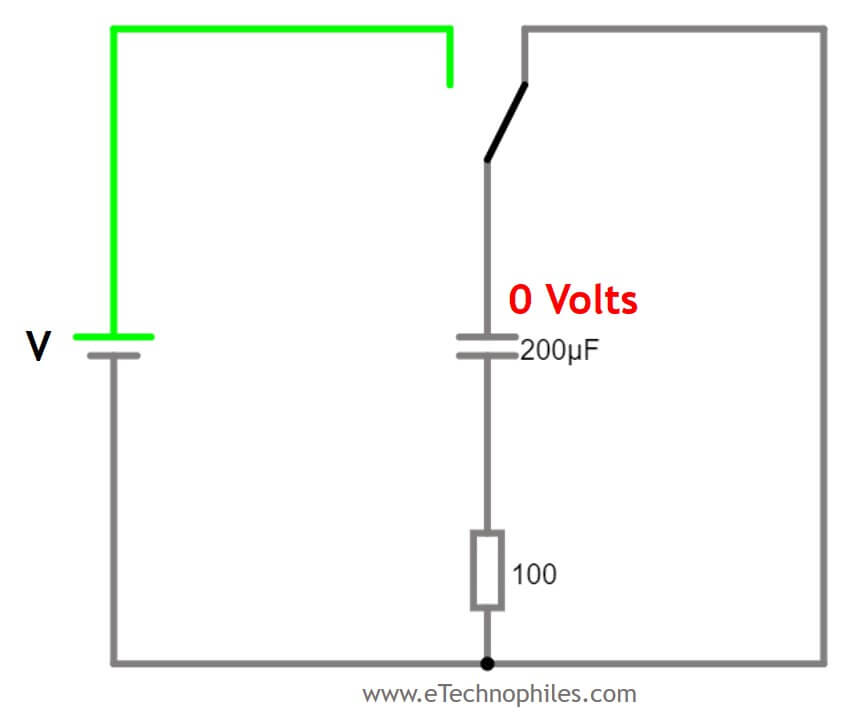
A capacitor at the beginning will have no net charge and no voltage. The two plates of the capacitor are separated by a dielectric insulator, so there is no way a charge can flow from one plate to the other.
Connecting it to a DC source
When it is connected to a DC source, a battery, the electrons flow from the battery to the connected capacitor plate. The negative charge or electrons get accumulate on this plate.
This net negative charge cannot cross the dielectric but can induce or polarize it. To put it simply, this negative charge repels the electrons from the other plate which then becomes positively charged. Right now the circuit is in a transient state.
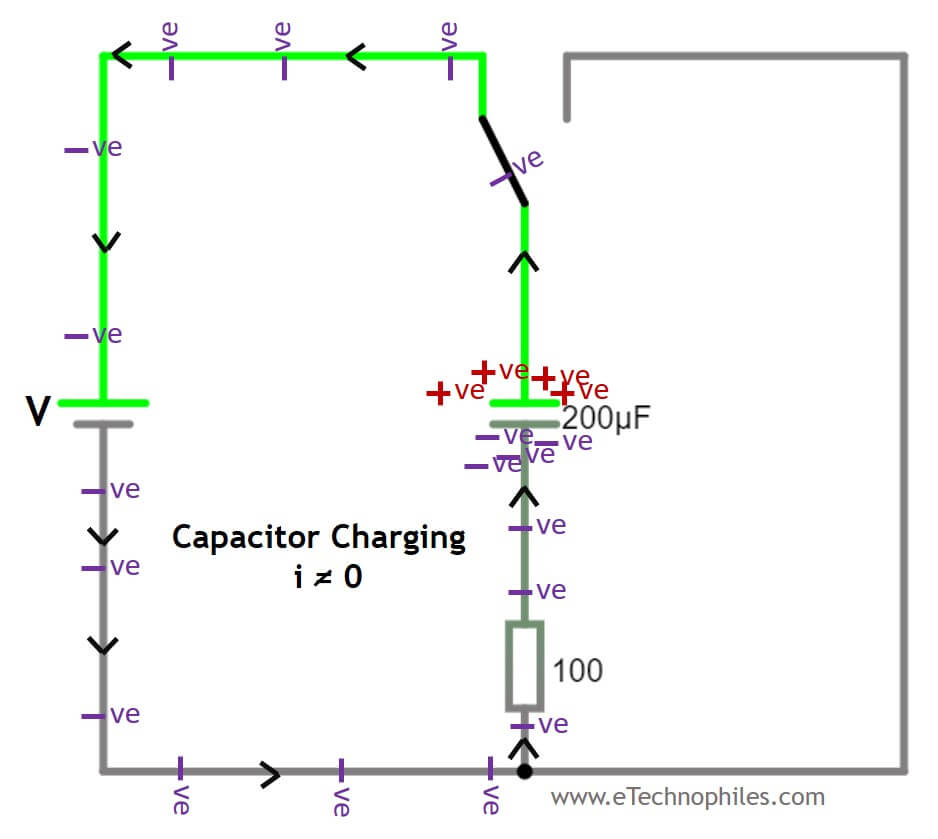
This keeps happening until no more electrons can be accumulated on the lower plate and the capacitor is fully charged equal and opposite to the battery voltage. Now no more current can flow through the circuit and this state is called a steady state. That’s when we say it is blocking DC.
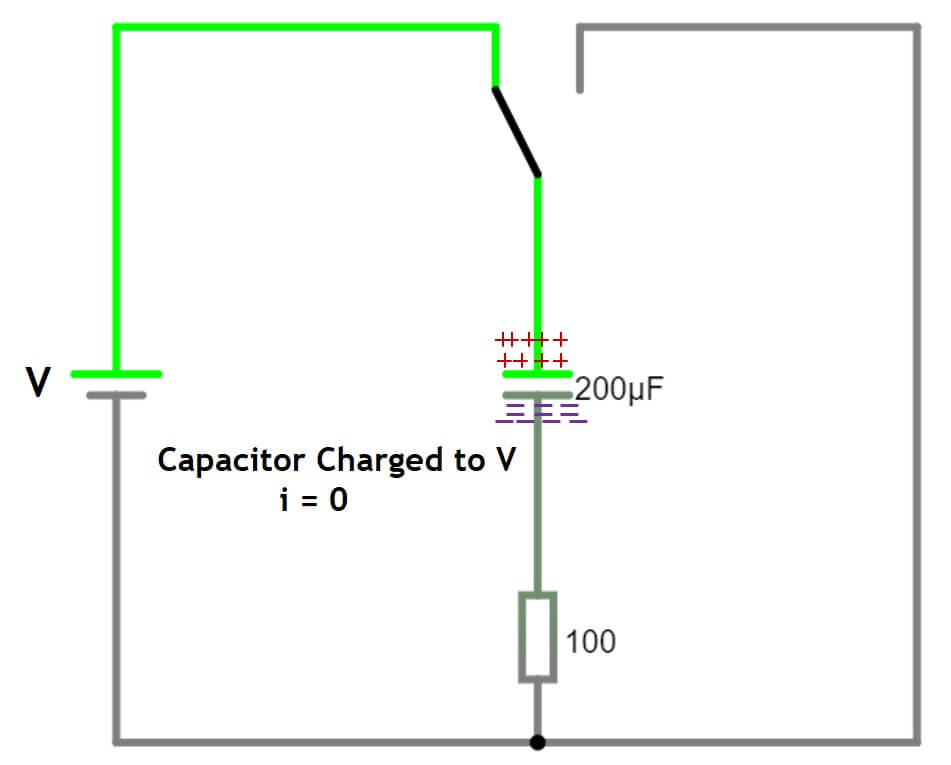
Without a resistor, charging of the capacitor happens so quickly, it seems like DC was blocked from the beginning.
Note that the opposite charges on the plates are attracted to each other but cannot cross the insulator dielectric. This creates an electric field inside the capacitor from the positive to the negative plate.
What’s the net charge on the capacitor now?
As ambiguous as it may sound, it is still zero. Since both plates have equal and opposite charges the overall net charge is zero.
Capacitor working in AC
Now replace the battery with an AC voltage source in the example. The charging process will be the same.
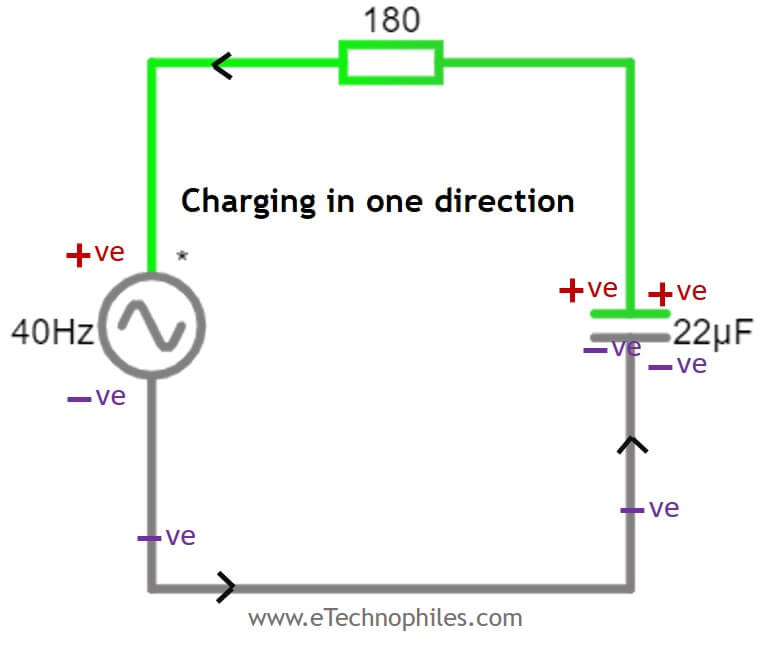
But now the input voltage is not steady, it periodically changes. So as soon as the capacitor gets fully charged to the peak voltage, the input voltage drops. This causes the capacitor to discharge in the opposite direction and current flows through the circuit.
When the input voltage becomes zero again, the capacitor is fully discharged. But the input voltage is now reversed and climbs up. So it charges again, though in the opposite direction this time.
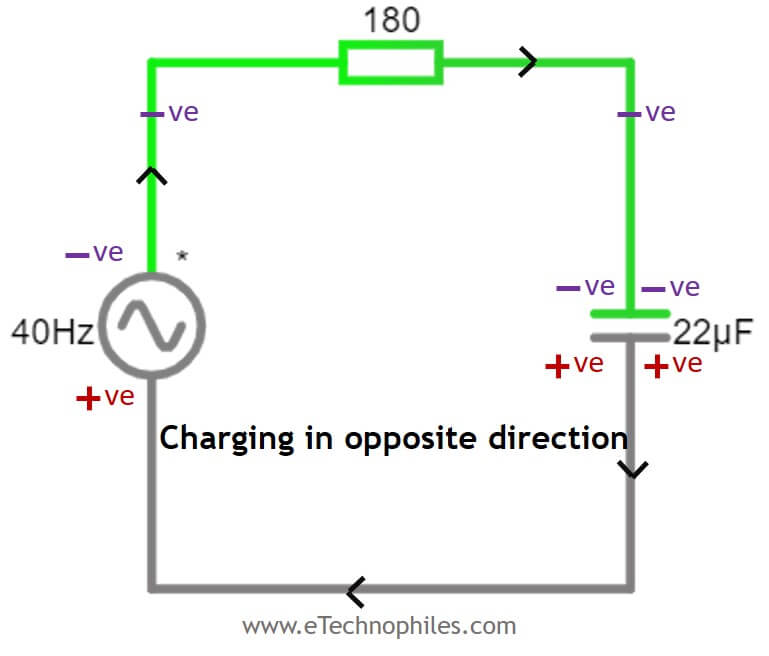
See the current does not get the time to settle and keeps changing and keeps flowing through the circuit. Hence the capacitor cannot block AC.
The mathematical approach
The reactance of the capacitor is given by the formula, XC = 1/2πfC. Where XC is the reactance, f is the frequency and C is the capacitance value.
The reactance of the capacitor during DC
Since f = 0 in the case of a DC supply. XC = 1/0 = infinity. The reactance is infinite hence no current passes through the circuit. That’s how a capacitor blocks DC.
The reactance of capacitor during AC
Since f has some value in an AC supply(a, let’s say). XC = 1/a = some value. The reactance has some value, hence current passes through the circuit. That’s how a capacitor passes AC.
FAQs
Can I use an AC capacitor for DC?
Yes, you can use an AC capacitor for DC applications. AC capacitors can handle the constant voltage of DC circuits.
What happens when DC is applied to the capacitor?
Apply DC to uncharged capacitor: current flows in, charges the plates, then stops when the voltage across the capacitor matches DC voltage. The capacitor blocks DC after that.
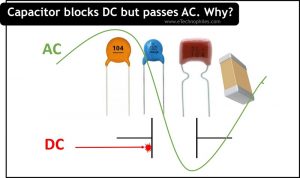
nice explanation
Glad to be of help